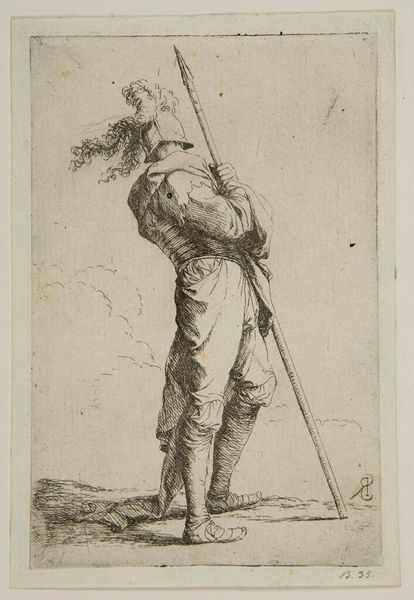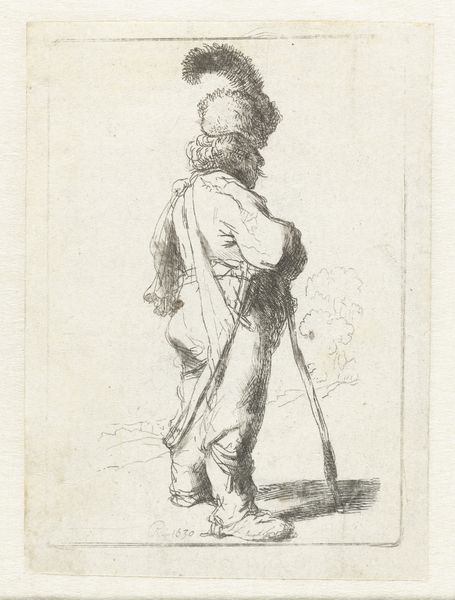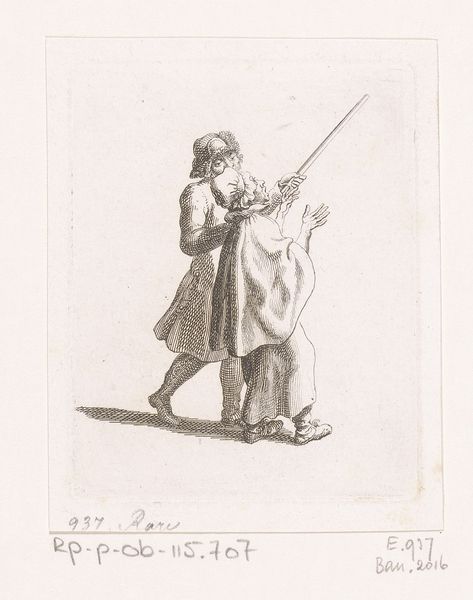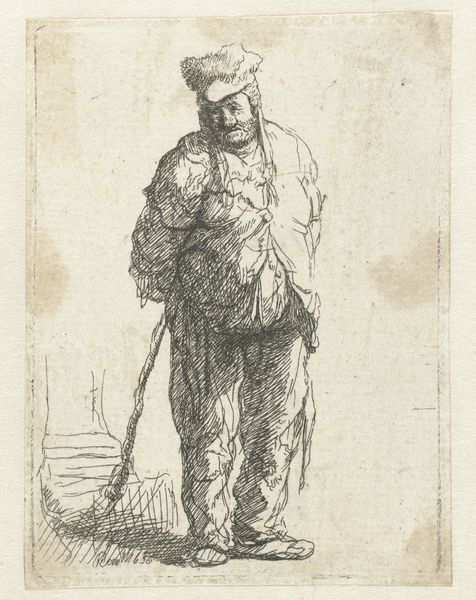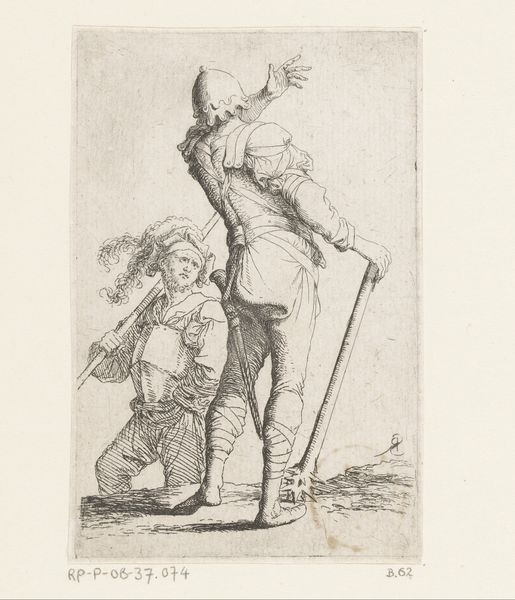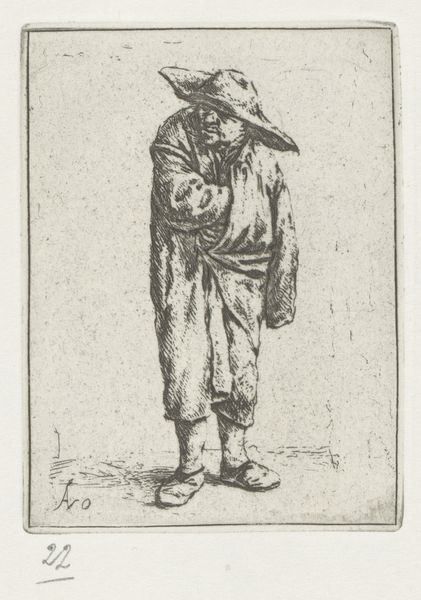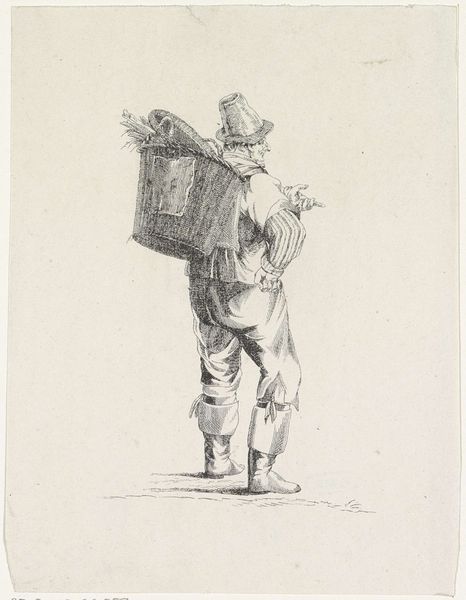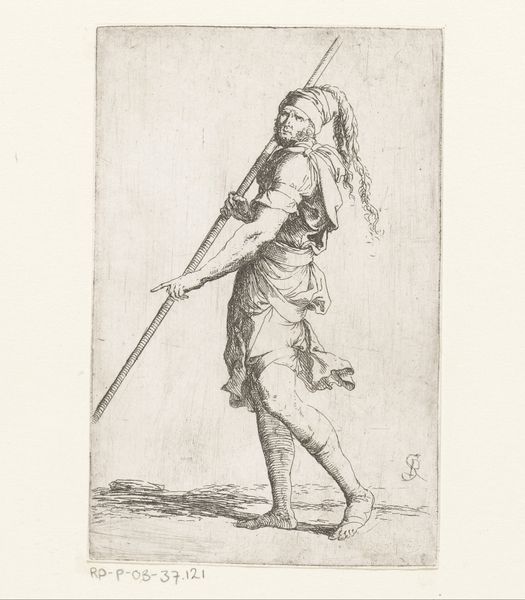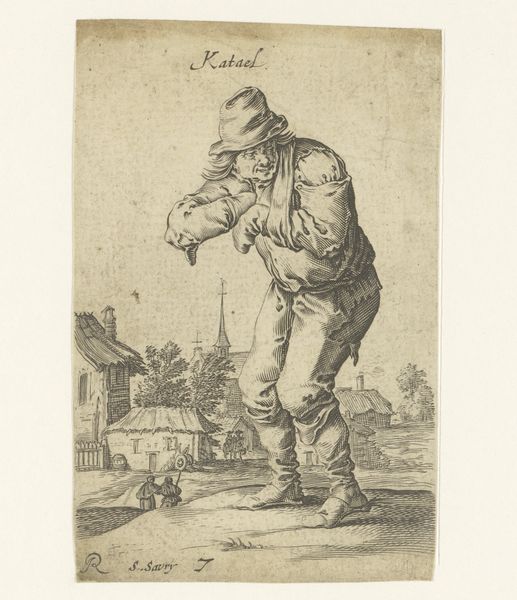
print, engraving
#
baroque
# print
#
old engraving style
#
figuration
#
history-painting
#
engraving
Dimensions: height 136 mm, width 88 mm
Copyright: Rijks Museum: Open Domain
Editor: Here we have “Soldaat met een lans,” or “Soldier with a Lance,” an engraving from after 1656, housed in the Rijksmuseum. It’s done by an anonymous artist and I am immediately drawn to how isolated and weary the figure seems despite the military trappings. What do you make of it? Curator: I see a figure burdened, not just by armour and weaponry, but also by something more profound. The downward cast of his head and the way he clutches the lance suggest a psychological weight. Notice how the artist uses the feathered helmet not just as adornment, but as an almost mournful drooping extension of the figure's dejection. The lance, typically a symbol of power, here appears more like a crutch, supporting his weariness. Editor: That’s a great observation! It almost seems like the accoutrements of war are actually weighing him down, making him look less like a proud soldier and more like a reluctant participant. Curator: Precisely. The artist is subtly playing with our expectations. The soldier's attire places him within a tradition of martial valor, yet the image subverts that tradition through posture and composition. This visual tension can tell us much about attitudes toward warfare and heroism at the time the work was created. Might the clouds swirling around him represent turbulent emotions, too? Editor: That’s fascinating to consider! So the artist may be commenting on the personal cost of conflict through visual metaphor? Curator: It's a compelling possibility. The image speaks volumes about the psychological toll of duty, disillusionment, and perhaps the questioning of established values within a changing society. Visual culture preserves so much shared experience. Editor: This has really made me think differently about how artists use familiar symbols to communicate complex ideas. I definitely see more than just a soldier now!
Comments
No comments
Be the first to comment and join the conversation on the ultimate creative platform.


